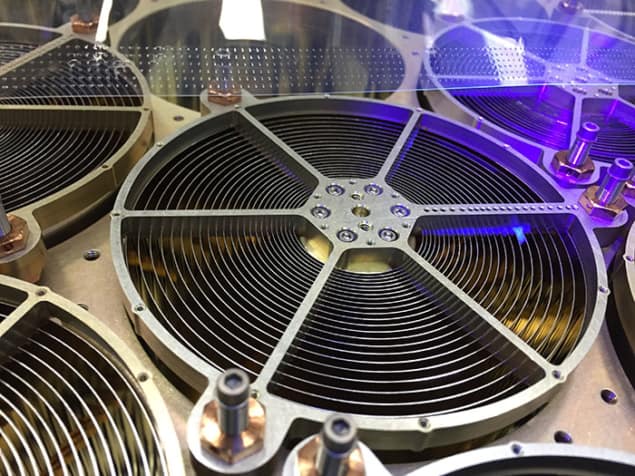
A GPS-like navigation system for spacecraft that uses X-ray signals from pulsars could soon be a reality because of an experiment done on the International Space Station (ISS). NASA engineers have shown that the ISS-based SEXTANT system can use signals from four pulsars to determine the location of the ISS to within 15 km. A pulsar-based navigation system would make it much easier for spacecraft to travel throughout the solar system, and beyond – according to NASA.
SEXTANT makes use of the NICER X-ray telescope. NICER was installed on the ISS in June 2017 and is designed to probe the interior of X-ray pulsars, which are spinning neutron stars that emit X-rays. This is done by making very precise measurements of the energy of the X-rays as well as the frequency of the pulses – which typically fall between 1 and 800 Hz.
Concentrating X-rays
NICER is an array of 52 X-ray concentrators – each a set of concentric cylindrical mirrors – that focus incoming X-rays on to silicon-drift detectors. These detectors record the energy and arrival times of individual X-ray photons from distant neutron stars.
The SEXTANT measurement was done over the course of two days using four pulsars with millisecond periods. The arrival times of the pulses are measured to within 300 ns and by comparing the arrival times of pulses from the four different sources, Sextant was able to track the position of the ISS as it travelled around Earth at nearly 28,000 km/h. The spatial resolution of the system is about 15 km, but NASA’s Jason Mitchell says this could be reduced to about 100 m in deep space.
Beyond the solar system
According to NASA, a future spacecraft could use pulsars to navigate deep space autonomously without having to communicate with Earth to workout its position. “This successful demonstration firmly establishes the viability of X-ray pulsar navigation as a new autonomous navigation capability,” says Mitchell. We have shown that a mature version of this technology could enhance deep-space exploration anywhere within the solar system and beyond.”
Following on from this early success, the SEXTANT team is updating on-board and ground-based software for a second test later this year.



